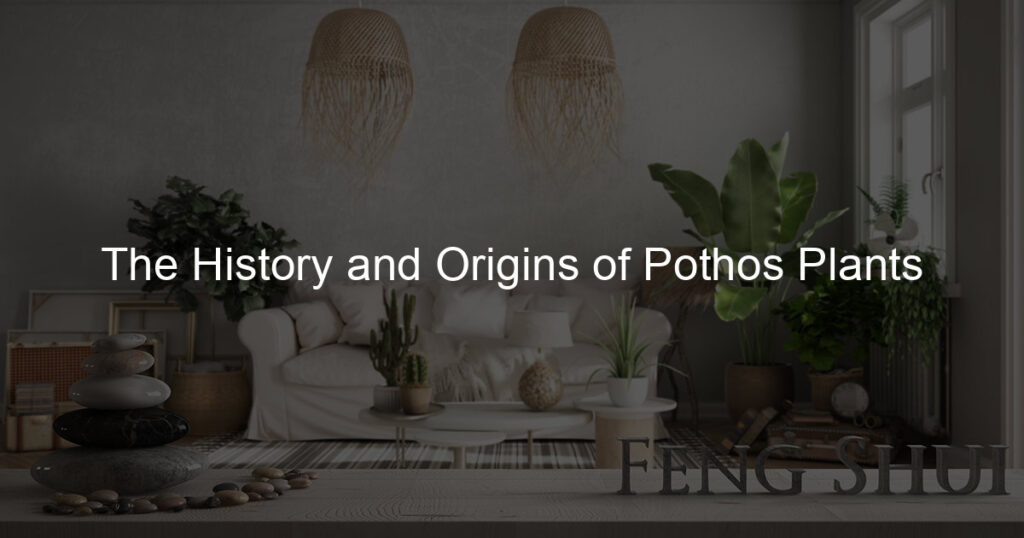As a passionate plant lover, you may have found yourself adoring the lush beauty of pothos plants in any room they grace with their presence. But did you ever stop to think about where these delightful trailing vines originated?
While they’ve become an eye-catching decoration for many homes, these versatile hearty plants actually journeyed through centuries and varied geographical regions before becoming the beloved potted houseplant that blossoms today.
Let’s take a look back into history and explore how the fascinating Pothos got its start!
What is the origin of pothos plants?
Pothos plants are a type of evergreen vine native to parts of the South Pacific, including Fiji and New Guinea. The genus Epipremnum comes from two Greek words—epi, meaning upon or at, and premium, meaning trunk.
This name accurately portrays the plant – it loves to climb up on surfaces like tree trunks or rocks. In their natural environment, pothos can sometimes reach up to 20 feet long! It’s no surprise that this hardy houseplant has become so popular – you only need to water it once or twice a week, and it can thrive even in lower levels of light.
Pothos also has natural air-purifying properties that help keep the inside of your home healthy and clean. All in all, this easy-going plant is a great way to enliven your space with lush greenery.
What does a pothos plant symbolize?
Pothos plants, also known as devil’s ivy, are treasured for their hardy nature and ease of care. It can thrive in a range of lighting levels, signalizing its incredible resilience. For some people, pothos plants symbolize determination and strength when they reach the sun, no matter the situation.
To others, it also stands for peace and serenity with its green leaves cascading gracefully over one’s desk or window sill. Whatever significance it holds for its owners, a pothos plant makes a beautiful addition to any home or workspace.
What mythology is the pothos plant?
The pothos plant, also known as the Devil’s Ivy, traces its origins back to ancient Greek mythology. According to one legend, it was said that an archangel named Phthonos used the leaves of the pothos plant to block out the sun during a war between Heaven and Hell.
While modern science has since disproved this story, the distinctive heart-shaped leaves of the pothos remain a reminder of its mythical past. The plant is also rumored to bring luck, wealth, and prosperity – although there’s no clear evidence that can back up this claim!
What is the common name for pothos?
The pothos plant, often seen slithering up the walls in malls and offices, is recognizable by its glossy, heart-shaped leaves with yellow or white variegation.
It is more commonly known as devil’s ivy due to its ability to survive in any type of condition, even when deprived of sunlight or water. Its scientific name is Epipremnum aureum but it also goes by many other names such as taro vine, silver vine, hunter’s robe, and marble queen.
This beautiful plant makes a perfect addition to any room or office setting with minimal maintenance needed – all that it needs is light and occasional watering, making it easy to care for even for busy people.
What are some fun facts about pothos?
Pothos is one of the easiest houseplants to care for, as they can survive with minimal sunlight and water. But, what else is there to know about this popular greenery? For starters, their scientific name is Epipremnum aureum and they are part of the aroid family.
Another fun fact about pothos is that they are a type of evergreen vine which means that they do not die off seasonally like many other plants. They thrive in warmer climates but can also survive in cooler temperatures with at least 65°F or lower at night time in order for them to continue the flowering process.
Pothos has beautiful green and yellow colored foliage that can transform any dreary room into an inviting haven.
Final Thoughts
In conclusion, Pothos plants are a type of evergreen houseplant originating in tropical parts of the world. As one of the most popular and low-maintenance houseplants for any home, these plants make a great addition to an indoor space.
They are also known to reduce carbon dioxide levels in the atmosphere, providing a much-needed breath of fresh air for both homeowners and their guests. Not only do Pothos plants look wonderful indoors, but they also make an excellent choice for creating unique container gardens or terrariums outdoors.
Whether you choose to decorate your home with this floating foliage or bring its lush beauty outdoors, pothos plants will surely be worth it as they provide years of satisfaction with minimal care and upkeep.














